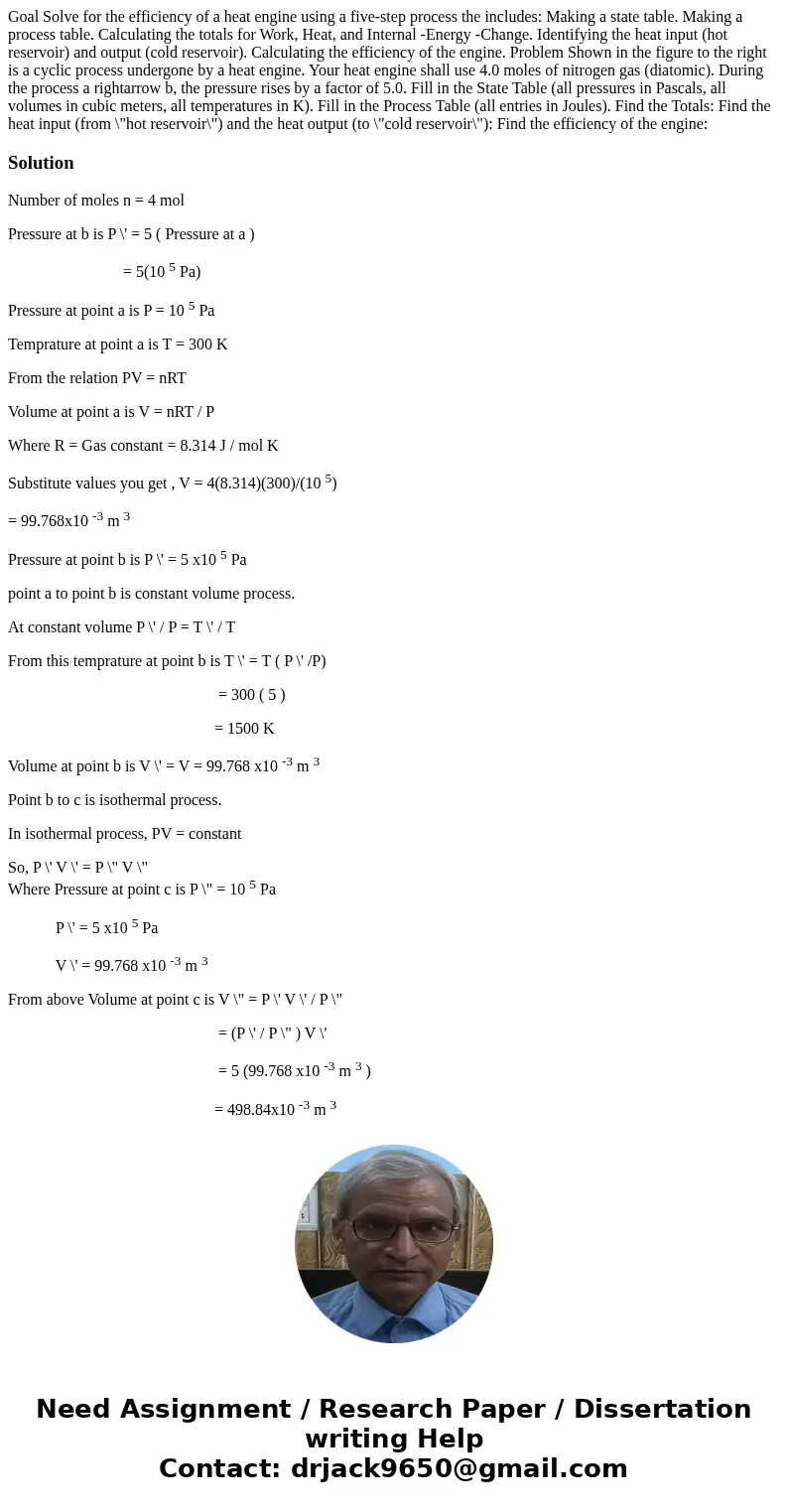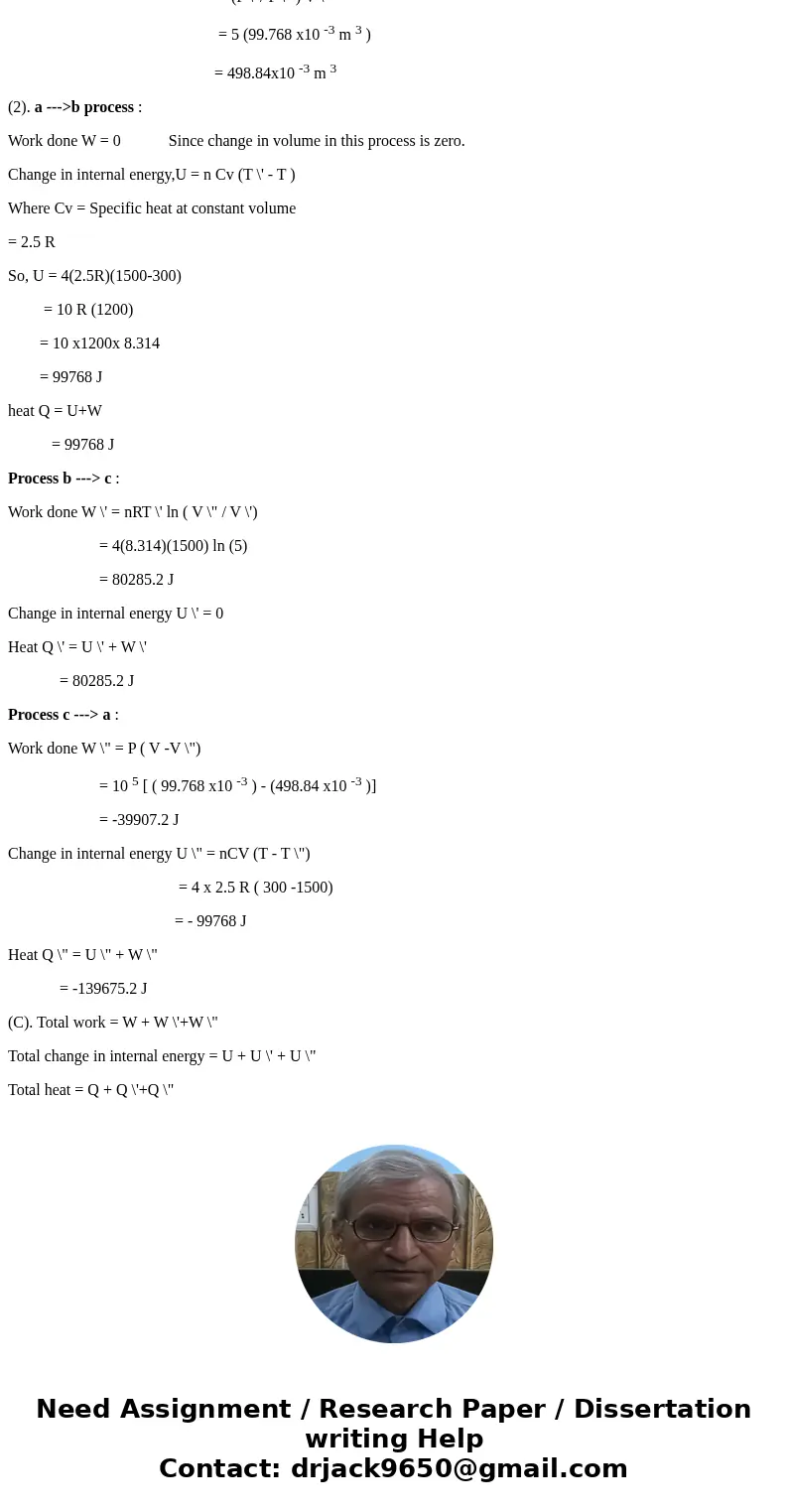Goal Solve for the efficiency of a heat engine using a fives
Solution
Number of moles n = 4 mol
Pressure at b is P \' = 5 ( Pressure at a )
= 5(10 5 Pa)
Pressure at point a is P = 10 5 Pa
Temprature at point a is T = 300 K
From the relation PV = nRT
Volume at point a is V = nRT / P
Where R = Gas constant = 8.314 J / mol K
Substitute values you get , V = 4(8.314)(300)/(10 5)
= 99.768x10 -3 m 3
Pressure at point b is P \' = 5 x10 5 Pa
point a to point b is constant volume process.
At constant volume P \' / P = T \' / T
From this temprature at point b is T \' = T ( P \' /P)
= 300 ( 5 )
= 1500 K
Volume at point b is V \' = V = 99.768 x10 -3 m 3
Point b to c is isothermal process.
In isothermal process, PV = constant
So, P \' V \' = P \" V \"
Where Pressure at point c is P \" = 10 5 Pa
P \' = 5 x10 5 Pa
V \' = 99.768 x10 -3 m 3
From above Volume at point c is V \" = P \' V \' / P \"
= (P \' / P \" ) V \'
= 5 (99.768 x10 -3 m 3 )
= 498.84x10 -3 m 3
(2). a --->b process :
Work done W = 0 Since change in volume in this process is zero.
Change in internal energy,U = n Cv (T \' - T )
Where Cv = Specific heat at constant volume
= 2.5 R
So, U = 4(2.5R)(1500-300)
= 10 R (1200)
= 10 x1200x 8.314
= 99768 J
heat Q = U+W
= 99768 J
Process b ---> c :
Work done W \' = nRT \' ln ( V \" / V \')
= 4(8.314)(1500) ln (5)
= 80285.2 J
Change in internal energy U \' = 0
Heat Q \' = U \' + W \'
= 80285.2 J
Process c ---> a :
Work done W \" = P ( V -V \")
= 10 5 [ ( 99.768 x10 -3 ) - (498.84 x10 -3 )]
= -39907.2 J
Change in internal energy U \" = nCV (T - T \")
= 4 x 2.5 R ( 300 -1500)
= - 99768 J
Heat Q \" = U \" + W \"
= -139675.2 J
(C). Total work = W + W \'+W \"
Total change in internal energy = U + U \' + U \"
Total heat = Q + Q \'+Q \"


 Homework Sourse
Homework Sourse